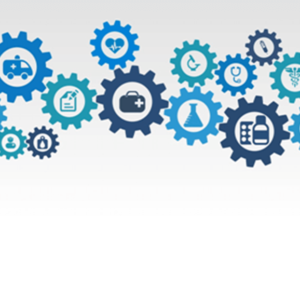- 1.1: Examine the historical overview of the U.S. health care system.
- 1.2: Explore the primary characteristics of the U.S. health care system.
- 1.3: Describe the framework and models of the U.S. health care system.
Introduction to the U.S. Healthcare System
This course explores the U.S. health care system starting with an overview of the U.S. health care system, before analyzing how health services have evolved over time in the United States. Students will examine the Triple Aim of health care, as well as health care reform. They will also learn about various health care populations and approaches to public health, managed care, outpatient services, inpatient services, and mental health care. They will also explore the role of various health care professionals and providers, the costs associated with health care, and the role of information technology in health care. Finally, students will take a closer look at health care policy and how U.S. health care compares to other countries.
The content of this course was created by BNED. Unless otherwise noted, it is under CC BY-NC-SA 4.0 Attribution License.
Learning Objectives/
- 2.1: Describe the key historical developments that have shaped the U.S. health care delivery system.
- 2.2: Summarize the corporatization of medical care in the U.S. health care delivery system.
- 3.1: Distinguish the components of the triple aim of health care: cost, access, and quality.
- 3.2: Differentiate between the macro and micro factors impacting the triple aim.
- 3.3: Evaluate methods of containing the triple aim.
- 4.1: Examine health care reform.
- 4.2: Compare and contrast health care reform strategies.
- 5.1: Identify the various health care population groups in the United States.
- 5.2: Examine the predisposing characteristics of vulnerable populations.
- 5.3: Compare and contrast the key components of public health versus medical services.
- 6.1: Distinguish between the main types of managed care organizations.
- 6.2: Describe integrated systems, integrated delivery systems, and accountable care organizations.
- 7.1: Explore the main principles of primary care services.
- 7.2: Explain the gatekeeping concept as it relates to primary care services.
- 7.3: Examine the various types of outpatient services.
- 8.1: Examine the causes and components of the evolution of hospitals in the United States.
- 8.2: Determine the key components of hospital and inpatient operations.
- 8.3: Distinguish between the various types of hospitals.
- 9.1: Explain the impact of mental illness on health and productivity.
- 9.2: Examine how and where mental health services are provided in the medical sector.
- 10.1: Describe the various types of health services professionals.
- 10.2: Differentiate the types of training and health care settings for the various types of health care providers.
- 11.1: Inspect health care cost escalation factors.
- 11.2: Examine the regulatory and market-oriented approaches to cost containment.
- 11.3: Differentiate between private and government financiers of health care in the United States.
- 12.1: Identify the impact of various technology tools used in health care delivery.
- 12.2: Compare and contrast the benefits and challenges of medical technology.
- 13.1: Interpret key legislative U.S. health care policies.
- 13.2: Examine current and potential critical health policy issues.
- 13.3: Explore the factors which will affect the future of health care delivery in the United States.
- 14.1: Explain the similarities and differences of the U.S. approach to health care as compared to other countries.
- 14.2: Explain the challenges of strengthening global health security such as global disease surveillance and reporting.





There are no reviews yet.